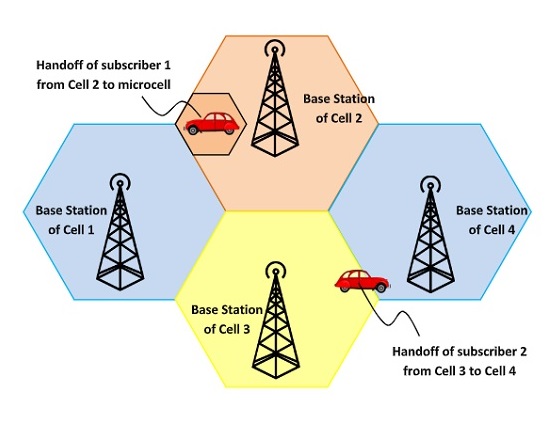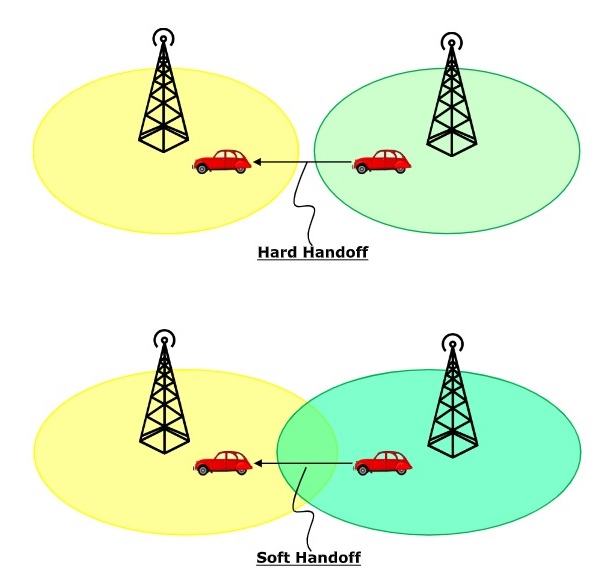
 Data Structure
Data Structure Networking
Networking RDBMS
RDBMS Operating System
Operating System Java
Java MS Excel
MS Excel iOS
iOS HTML
HTML CSS
CSS Android
Android Python
Python C Programming
C Programming C++
C++ C#
C# MongoDB
MongoDB MySQL
MySQL Javascript
Javascript PHP
PHP
- Selected Reading
- UPSC IAS Exams Notes
- Developer's Best Practices
- Questions and Answers
- Effective Resume Writing
- HR Interview Questions
- Computer Glossary
- Who is Who
Handoff in Mobile Connections
Definition
In cellular communications, the handoff is the process of transferring an active call or data session from one cell in a cellular network or from one channel to another. In satellite communications, it is the process of transferring control from one earth station to another. Handoff is necessary for preventing loss of interruption of service to a caller or a data session user. Handoff is also called handover.

Situations for triggering Handoff
Handoffs are triggered in any of the following situations −
If a subscriber who is in a call or a data session moves out of coverage of one cell and enters coverage area of another cell, a handoff is triggered for a continuum of service. The tasks that were being performed by the first cell are delineating to the latter cell.
Each cell has a pre-defined capacity, i.e. it can handle only a specific number of subscribers. If the number of users using a particular cell reaches its maximum capacity, then a handoff occurs. Some of the calls are transferred to adjoining cells, provided that the subscriber is in the overlapping coverage area of both the cells.
Cells are often sub-divided into microcells. A handoff may occur when there is a transfer of duties from the large cell to the smaller cell and vice versa. For example, there is a traveling user moving within the jurisdiction of a large cell. If the traveler stops, then the jurisdiction is transferred to a microcell to relieve the load on the large cell.
Handoffs may also occur when there is an interference of calls using the same frequency for communication.
Types of Handoffs
There are two types of handoffs −
Hard Handoff − In a hard handoff, an actual break in the connection occurs while switching from one cell to another. The radio links from the mobile station to the existing cell is broken before establishing a link with the next cell. It is generally an inter-frequency handoff. It is a "break before make" policy.
Soft Handoff − In soft handoff, at least one of the links is kept when radio links are added and removed to the mobile station. This ensures that during the handoff, no break occurs. This is generally adopted in co-located sites. It is a "make before break" policy.

Mobile Assisted Handoff
Mobile Assisted Handoff (MAHO) is a technique in which the mobile devices assist the Base Station Controller (BSC) to transfer a call to another BSC. It is used in GSM cellular networks. In other systems, like AMPS, a handoff is solely the job of the BSC and the Mobile Switching Centre (MSC), without any participation of the mobile device. However, in GSM, when a mobile station is not using its time slots for communicating, it measures signal quality to nearby BSC and sends this information to the BSC. The BSC performs handoff according to this information.

